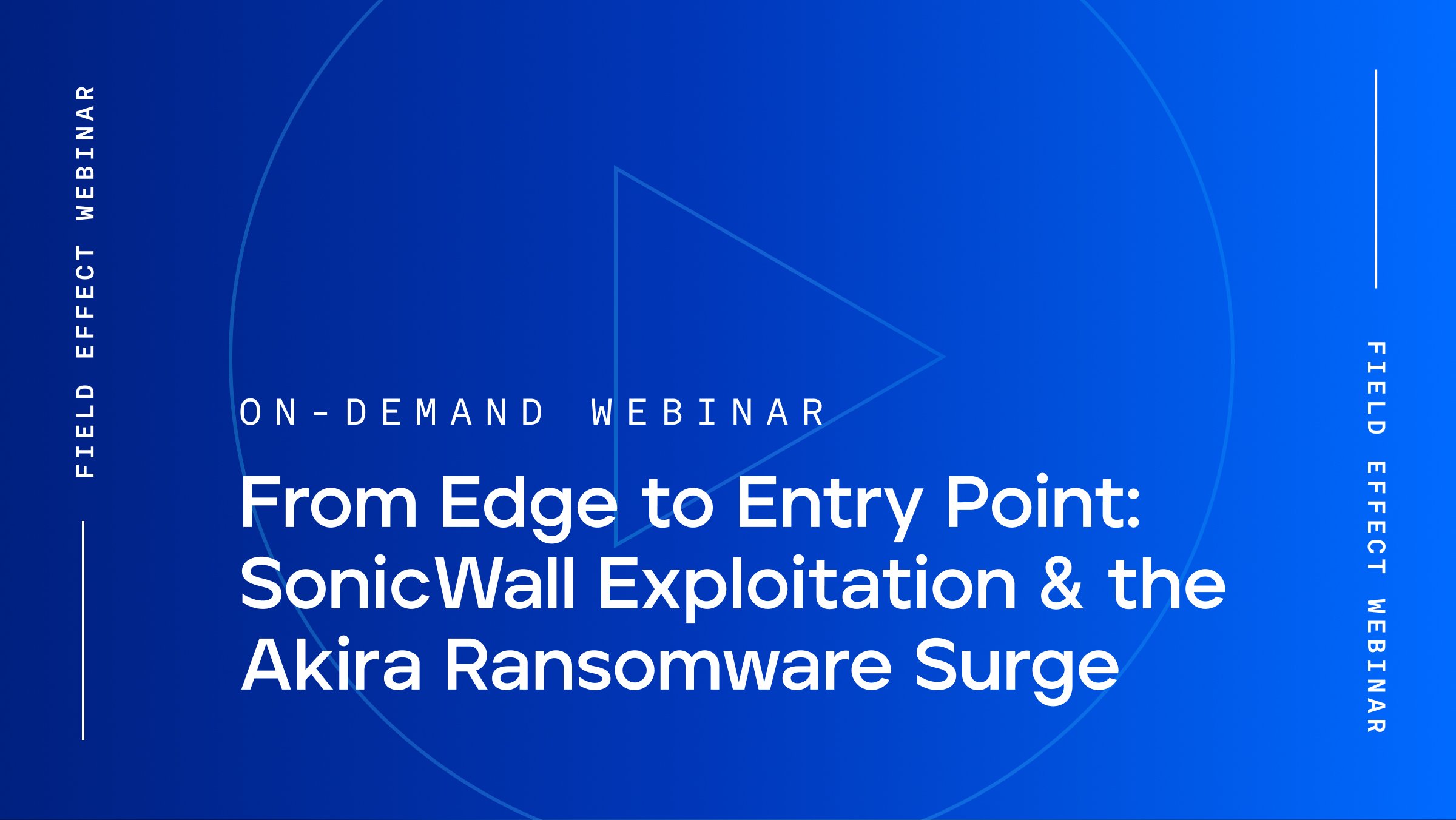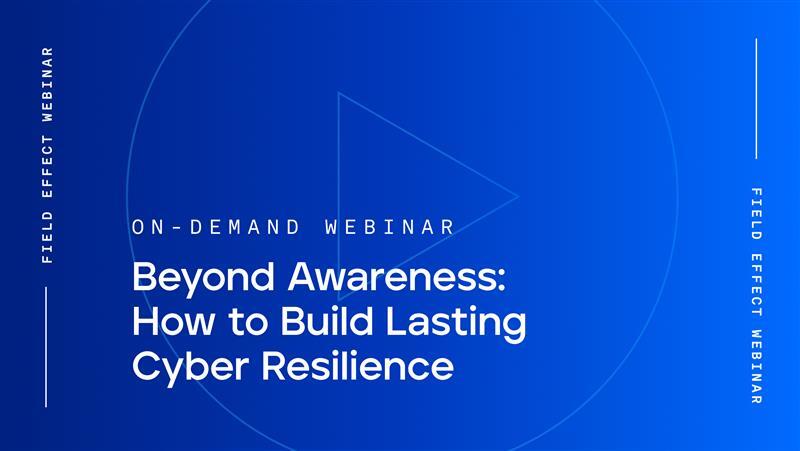
Blog Post
March 20, 2023 | Cybersecurity education
By Field Effect
Last updated: February 22, 2024
The size of the global cybersecurity workforce is an estimated 4.7 million people—the highest ever recorded according to (ISC)2's 2022 Cybersecurity Workforce Study.
However, the demand for cybersecurity professionals is still growing faster than supply. Despite adding more than 464,000 workers in the past year, the cybersecurity workforce gap grew by double that.
Right now, there’s a worldwide gap of 3.4 million cybersecurity workers.
The ongoing demand for cybersecurity talent gives universities and colleges a tremendous opportunity. Educational institutions prepare their students for the world and workforce, and this perfectly positions them to address the cybersecurity skills gap.
But well-trained, work-ready graduates need more than theory—they need hands-on cybersecurity experience tackling real scenarios they’re likely to face on the job.
By expanding the capacity of their cybersecurity programs with specialized technology, additional content, and practical experience for students, higher education institutions can meet that demand.
One way to do that is with a cyber range.
A cyber range is a simulation-based cybersecurity training platform used by businesses, governments, and academic organizations around the world.
Cyber ranges come with prebuilt virtual labs, powerful automation, and even customizable content curriculums. From traditional lab-style courses with objectives and red vs. blue team games to complex CTF and capstone projects, cyber ranges make it easier for students to learn experientially.
Take a peek inside the Cyber Range platform and its rich, virtualized environments, with these short demo videos.
Instructors know that effective security education requires hands-on learning, but running a controlled virtual environment for students to learn in is no easy task—especially with large class sizes and dated technology.
Those that can run lab environments are often bogged down with manual managerial tasks—setting up, tearing down, and resetting virtual environments. Students lose a large portion of class time getting the environment ready and have little time left for the actual concept being taught. By using cyber range, the students begin learning the core concept of the lab immediately.
Cyber ranges make it easy to stand up, tear down, and even rescale virtual environments on the fly in minutes with no need to reconfigure devices or clean up after earlier trainings.
When it comes time for assessments, the cyber range makes it easy to measure, track, and report on progress and results with user-friendly metrics and measurement tools. The platform makes it easy to see who uses hints, how many incorrect answers were given, even how long each user took to complete the assignment.
Cyber ranges can be used in-classroom or remotely. With a browser-based cyber range, all your students need to access cybersecurity training is a laptop and an internet connection. You can even allow students to access instructor-led or self-directed courses at any time, so they have the freedom to learn when and how they want.
This means instructors can view, monitor, and interact with classrooms, exercises, and training virtually too. Instructors can easily check student status to understand how everyone is progressing, what tasks might be causing difficulty, and who may need more help.
If an instructor wants to help a student, a shared mode can be enabled where both instructor and student can control the same virtual machine, allowing the student to see what the instructor is doing and vice-versa.
More universities and colleges than ever are providing cybersecurity programs, but many still rely on tabletop exercises and outdated technology. A cyber range provides new opportunities for your cyber program to grow and differentiate itself from the competition.
With an easy-to-use cyber range, students will have a positive experience about the concept they’re learning. This often means there is a better chance of retaining the knowledge they have learned and leaving with the desire to learn and do more. There’s a reason that cyber ranges are proven to produce more job-ready grads—resulting in a higher employment rate that will impress prospective students.
Beyond degree programs, cyber ranges make it easy to offer continuing education opportunities or micro-credentials. They also are ideal for research as the platform provides a safe environment to test tools, malware, and attack scenarios with no risk.
Cyber ranges themselves can even help with student recruitment by sparking interest in your program. For example, you can use the platform to run a cyber day or capture-the-flag event for K-12 students to promote and differentiate your school’s program.
One of the best parts of a cyber range is that there are so many ways to use them in an educational setting—these are just a few.
A cyber range can be used to host capture-the-flag events for K-12 students to raise awareness about cybersecurity careers and spark interest in your cyber program.
Take the Information and Communications Technology Council's (ICTC’s) CyberTitan program, for example, which uses Field Effect Cyber Range to run events for middle and secondary school students.
These cybersecurity-themed challenges encourage participants to put their problem-solving skills and technical knowledge to work. CTFs are great for learning, but they’re an equally great way to promote and differentiate your cybersecurity program.
Learn how Cyber Range makes it easy to test, train, and evaluate students in realistic conditions, better preparing them for a career in cybersecurity.
Cyber ranges make it easy to run realistic CTF challenges—from groups attacking and defending infrastructure to individuals solving small puzzles—while generating buzz for your program.
Cyber ranges can be used to train individuals on a variety of cyber security topics. Often, one difficulty in creating training for individuals is the complexity in setting up identical environments for every student taking the course concurrently.
Cyber ranges can create identical and completely isolated environments for everyone, so each student is in control of their own learning. What one student does in their environment would have zero effect on any other student in the system.
If a course is tagged as self-paced, students can begin courses on their own. Being able to reset a lab so easily and quickly means students can go back and make sure they understood the concepts.
The first time through the lab, a student may need the steps outlined for them, but then can optionally reset the lab, turn the step-by-step instructions off and self-evaluate their understanding of the content after being given only the objective.
Although training is self-paced, instructors have the same abilities to help a student as they would in the instructor-led scenarios.
With virtual machines and quick provisioning, cyber ranges can be used in a laboratory environment. Taking advantage of the isolation allows for students to:
After each of these scenarios is used in a lab setting, they can easily be replicated into any course or exercise to then be used by students for training purposes. This allows experts to share findings and turn those findings into valuable real-world lessons for current and future cyber practitioners alike.
It can be hard to evaluate technical skills. Many individuals can answer skill-testing questions on a paper exam, but that may not adequately determine their true ability.
Instructors can use the cyber range for assessments, giving everyone their own unique environment and the same questions to complete. The platform can track the time taken to complete the task and the number of hints used, and automatically generate a report to evaluate the student’s work.
Field Effect Cyber Range gives academic organizations access to a platform that comes loaded with all the tools needed to deliver hands-on, experiential cybersecurity training and education.
Organizations like the ICTC and Manitoba Institute of Trades & Technology (MITT) use Cyber Range to accelerate and upscale their education programs, creating ecosystems that help shape future security talent.
The flexibility offered by Cyber Range gives educational institutions an opportunity to build robust cybersecurity education centers, fully equipped with the tools and content necessary to produce skilled professionals ready to enter the workforce.
Book a demo to see how Cyber Range can elevate your program.


